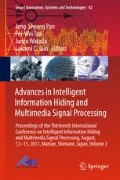Abstract
In this paper, an OTDR-wide full dispersion fiber stress sensor is used to sensing the signal of strain, and the geometrical bending of the optical fiber can be generated by the strain of stress, and the variation characteristic of the optical conduction modal. When stress is produced in single-mode fibers, the optical energy of a part of the optical fiber is transformed into a radiant mode, so that an OTDR can accurately identify the location of the signal source, and the OTDR uses the time-domain analysis of the optical pulse wave technique, which can simultaneously sensing the accurate energy loss and position of the source of stress signals [1].
The single-mode optical fiber is used to simulate two different practical environments. One is the soil, the other is the sand, and uses two different material protection casing, one is the plastic casing, the other is the silicone casing, carries on the real measure, and compares the different light wave pulse width, the measured result to the different average time to the stress influence. Finally, the material elasticity and deformation characteristics of two kinds of protective casing are tested. The experimental results are that the selection of silicone protective casing is ideal, while the length of 150 m multi-point monitoring, the light pulse width of the choice of 100 ns, so the results obtained in the experiment can prove the ratio of stress to elastic modulus of relationship. On the other hand, because the quality of sand and soil of different problems, so the hardness of different, the same weight trample on the specific stresses of the rendering, in different substrate materials reflect different stress changes, because the sand soft and then greatly enhance the sensitivity of stress [2].
Access this chapter
Tax calculation will be finalised at checkout
Purchases are for personal use only
References
Guo, Z.S., Feng, J., Wang, H.: Cryogenic temperature characteristics of the fiber Bragg grating sensors. Cryogenics 52(10), 457–460 (2012)
Guo, L.Y., Ho, I.J., Hou, Y.Y., Yang, C.H., Wu, W.L., Chen, S.K.: Comparison of plantar pressure distribution between different speed and incline during treadmill jogging. J. Sports Sci. Med. 9(1), 154–160 (2010)
Mita, A., Yokoi, I.: Fiber Bragg grating accelerometer for structural health monitoring. In: Fifth International Conference on Motion and Vibration Control (2000)
Jung, J., Nam, H., Lee, B., Byun, J.O., Kim, N.S.: Fiber bragg grating temperature sensor with controllable sensitivity. Appl. Opt. 38, 2752–2754 (1999)
Wu, Q., Hatta, A.M., Wang, P., Semenova, Y., Farrell, G.: Use of a bent single SMS fiber structure for simultaneous measurement of displacement and temperature sensing. IEEE Photonics Technol. Lett. 23(2), 130–132 (2011)
Shen, C., Zhong, C.: Novel temperature-insensitive fiber Bragg grating sensor for displacement measurement. Sensor Actuators A Phys. 170(1–2), 51–54 (2011)
Fu, H., Shu, X., Suo, R., Zhang, L., He, S., Bennion, I.: Transversal-load sensor by using local pressure on a chirped fiber bragg grating. IEEE Sensors J. 10(6), 1140–1141 (2010)
Guru Prasad, A.S., Omkar, S.N., Vikranth, H.N., Anil, V., Chethana, K., Asokan, S.: Design and development of Fiber Bragg Grating sensing plate for plantar strain measurement and postural stability analysis. Measurement 47, 789–793 (2014)
Wang, Q., Zhang, L., Sun, C., Yu, Q.: Multiplexed fiber-optic pressure and temperature sensor system for down-hole measurement. IEEE Sensors J. 8(11), 1879–1883 (2008)
Dziuda, L., Skibniewski, F.W., Krej, M., Lewandowski, J.: Monitoring respiration and cardiac activity using fiber bragg grating-based sensor. Biomed. Eng. 59(7), 1934–1942 (2012)
Author information
Authors and Affiliations
Corresponding author
Editor information
Editors and Affiliations
Rights and permissions
Copyright information
© 2018 Springer International Publishing AG
About this paper
Cite this paper
Huang, HS., Pan, JS., Tseng, YM., Fang, W., Shih, RM. (2018). Development of Optical Fiber Stress Sensor Based on OTDR. In: Pan, JS., Tsai, PW., Watada, J., Jain, L. (eds) Advances in Intelligent Information Hiding and Multimedia Signal Processing. IIH-MSP 2017. Smart Innovation, Systems and Technologies, vol 82. Springer, Cham. https://doi.org/10.1007/978-3-319-63859-1_27
Download citation
DOI: https://doi.org/10.1007/978-3-319-63859-1_27
Published:
Publisher Name: Springer, Cham
Print ISBN: 978-3-319-63858-4
Online ISBN: 978-3-319-63859-1
eBook Packages: EngineeringEngineering (R0)

